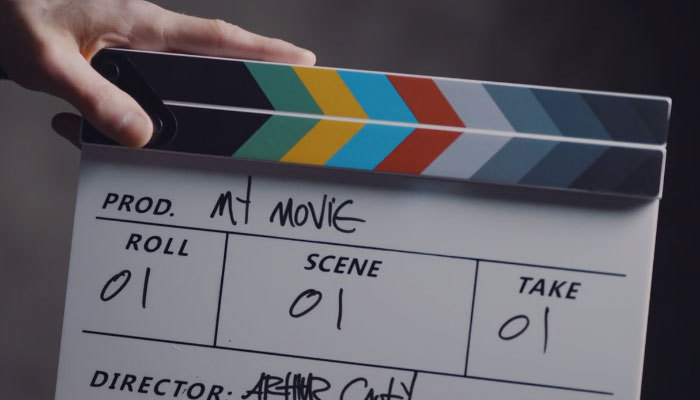Today on Art of the Cut, Sven Budelmann discusses his work on the film All Quiet on the Western Front. His editing on the film has been nominated this year for both a BAFTA and an ACE Eddie, and the film has been nominated for nine Oscars, including Best Picture.
Sven’s other work includes the feature film, The Physician - among many others - and TV series - with work on seven European TV series - including The Defeated and Deutschland 83.
BAFTA and ACE Eddie nominee Sven Budelmann discusses editing All Quiet on the Western Front
Did you read the book before you started editing or even before you interviewed with the director?Budelmann: Yes, but it's a long time ago. I think I read it in school. I don't remember the details, but I remember it was horrible and this feeling stayed with me, so I decided not to read it again and keep the feeling from then.
We also watched the two adaptations. I'm not sure if we watched the theatrical version or the TV version, but this is part of our school system - that everyone needs to learn about the horrors of war. This is something really important in school. Everyone has to read it.
The opening montage, I just loved. It's not a war montage. The opening starts quietly and painterly, naturally. Tell me a little bit about building that montage. How long did that take to construct?Budelmann: It took quite a while because, as usual, the beginning of a film is the most difficult part. You want to achieve so much, calming down the audience, telling the audience the pace, the tonality of the film, so that they can get used to it.
We never wanted to do an adventure movie and we never wanted to be sensational. We wanted to make clear right from the beginning that we have a slower pace and there might be some sudden changes in audio.
Especially in the beginning, we had a longer fox sequence that was shot, which ended with a sudden explosion of the foxhole. We saw the little fox puppies. We stayed with them and then some ever-closer explosions and suddenly, everything explodes. But this didn't feel right in terms of that we never wanted to be sensational and also we felt like we had several beginnings because the structure that we created repeated itself. So we started with this beautiful landscape. Everything is silent. Then we cut to the foxes and then, there's a sudden explosion. Then we cut to this top shot, where we see the dead soldiers when the camera goes down and crosses over the battlefield and then we see, “Ah, are we on the battlefield?” Then, there's another sudden explosion. Then, the next time where we have such a hard cut from loud to silent is when the young soldier is hit with a shovel and we cut to the title.
It was three times the same stylistic element and we felt like this is too much. That's why we cut away this element of the fox that the foxhole explodes as well.
We wanted to make sure that the audience adapts to the pace and that they get used to these sudden changes in audio level.
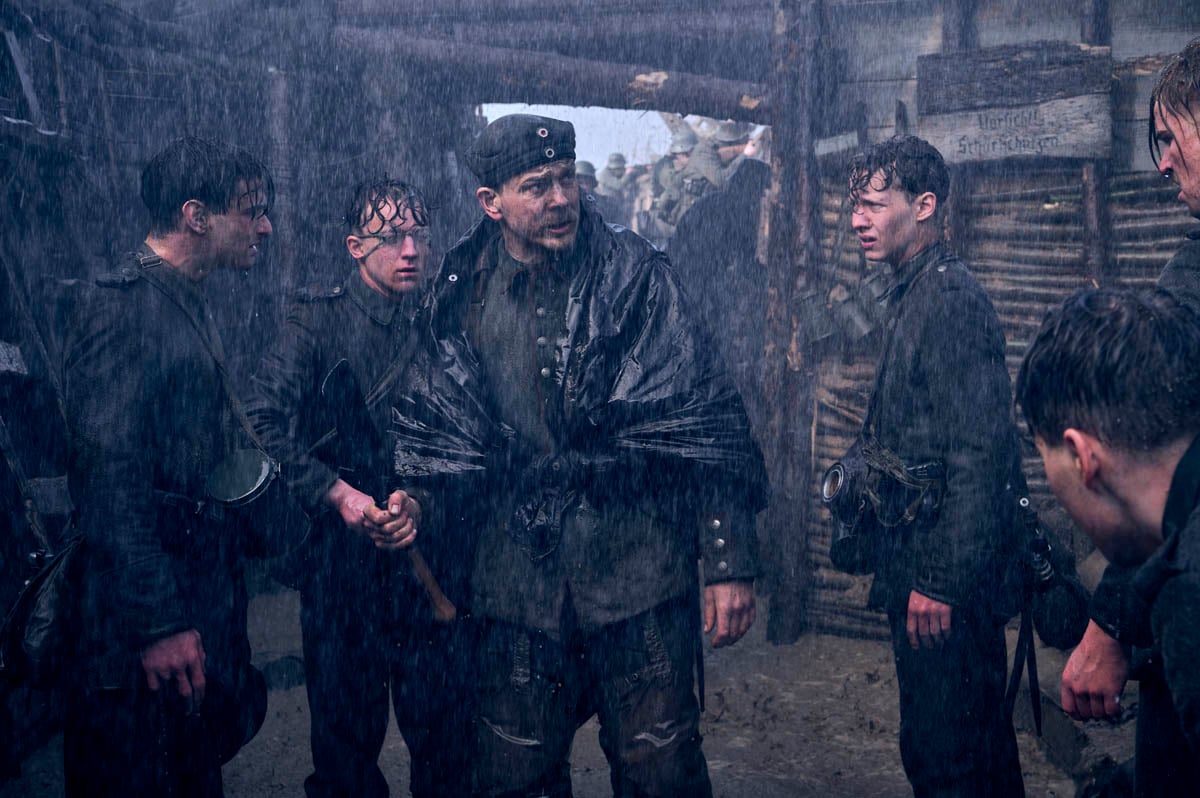
We explored different directions of how to treat the fox's nature and the battle. It's not easy, especially when you start a film with a 30-second long shot in the beginning. We thought, “Should it be 40 seconds? 20 seconds? 30 seconds?” It's really hard to judge. We have several sequences with these beautiful nature shots and, as I always say, dialogue scenes are sort of easier to cut because they give you sort of a timeframe.
The length of the scene is somehow defined and the dialogue gives it a structure. We have many scenes without dialogue. It gives you a lot of freedom with the length, but also more choices, which made it more challenging.
So what to do? That's why we already worked on a detailed sound design. We had to. Otherwise, we could have never known if the timing is right.
Part of that is score and the beginning doesn't have score. Correct?Budelmann: Yes, this is correct.
Tell me about that choice not to have score. When score eventually comes in, what's the motivator or what was the creative discussion that this is when score is going to come in?Budelmann: For me, it's important to create the tonality of a film. Of course, music is an important part in that - to create the tonality of a film. But in our case, everything should have been more restrained and more calm. We never wanted to manipulate the audience or dictate any feelings.
Everything should look more like a documentary and more authentic and realistic. All of this together made this beginning almost like a documentary. It’s just really clean and pale.

What I already did at an early stage is work with layout (temp) music. This is what I always do, but I never had the feeling in the rough cut phase that we need music in the beginning. It was quite clear to me that the music comes in pretty late. This is a common approach to how I approach a scene, like a battle scene.
You would think that a battle scene, which is two minutes long, like the first one, is two minutes of battle noises. But when you watch two minutes of battle noises, it becomes dull quickly. It was pretty clear to me that we need to build in dynamics. Working with dynamics can work on many levels, like with sound design, with perceptual perspective, or with music.
What I do is, when I start a scene, I try to find chapters. Like within the first battle scene, the camera goes down over the course of the battlefield. There, we have a silent moment until the first explosion. From there, hell breaks loose and we are in the trench and everything's really noisy. Until the soldier climbs up the ladder and there is the next chapter, where I think we are really close to the soldier. We tickled out the audio of his breath. The perceptual perspective changes and we can push back the battle noises that are closer with him. It’s more subjective.
We go with him over the battlefield. The camera's also closer, then he hides behind a trunk. Then, there's a really close explosion, which changed the audio again and the sound is really muffled. This is a chance that we created, so we could start from a really low level and build up the audio level with music now to the peak until he hits the French soldier with a shovel and then we cut to the titles.
These are the little chapters that I try to create to keep up the pace and to keep up the dynamics.
I'm assuming the structure of the first act was as scripted or did things get rearranged?Budelmann: The structure didn't change that much in the first act. After the screening, we felt like we needed to connect more with Paul and his friends. There used to be another scene after they were given the uniforms. They used to be a scene when hundreds of soldiers march through the village under the applause of the residents.
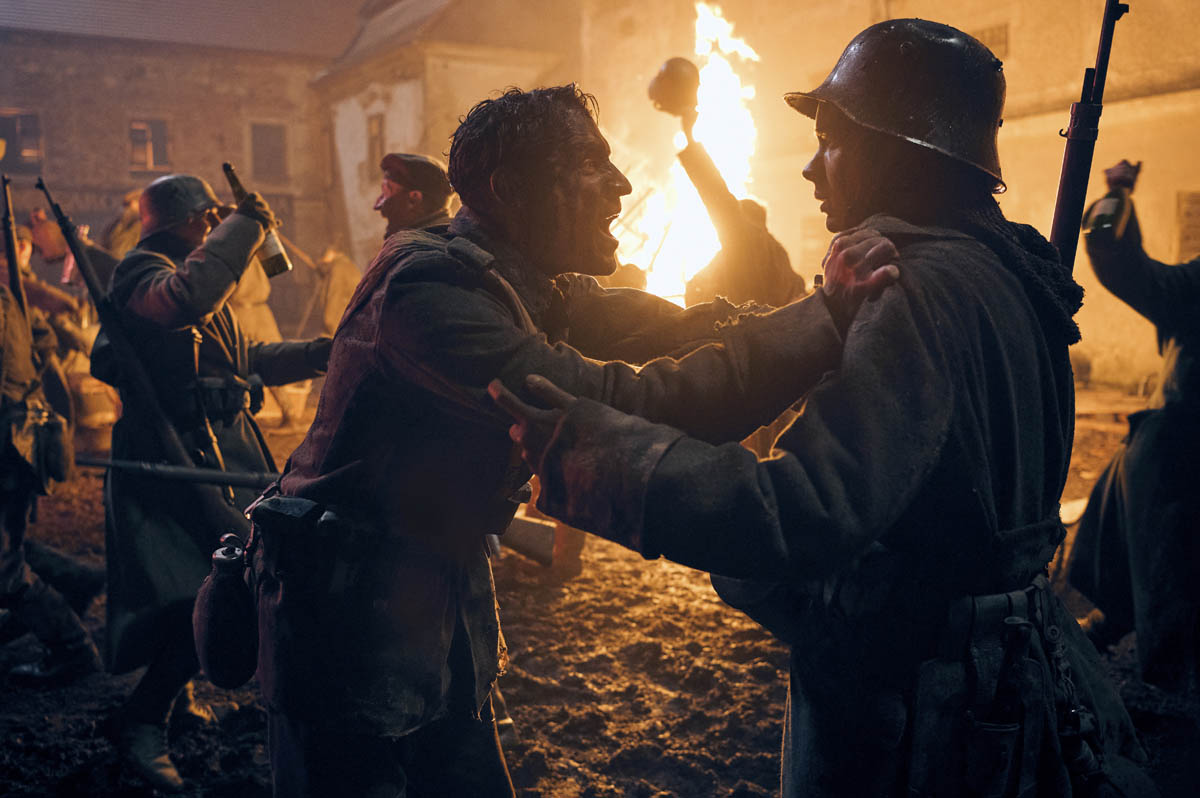
But, again, this scene didn't feel right. We never wanted to be sensational or push it in a patriotic direction. This scene was just too much of a show-off. This is one of these classic scenes when the audience is around clapping, cheering, and all that. It was too much and it got too loud.
Edward wrote a new scene for that, so we extended the scene when they got the uniforms and when they get dressed. Now, there's a dialogue when they talk about girls. Then, they start singing. The singing leads into the singing when they already marching out of town, which is a nicer connection.
We were able to stick a bit longer with a group of these friends and get to know them. This was basically the only change in the beginning.
So that was additional photography that got added that they shot after the first screening?Budelmann: Not after that. We had some more screenings, so we collected some things. There are two, three — I think in one bigger scene, more and some extra shots, like one pickup shot when he steps with his boots on the glasses, when he finds his friend Behm with a ripped-off leg. So these are some shots.
I think they had two more shooting days in September. I think one and a half months before we had picture lock.
What was the schedule like? When was principal photography and when did that end?Budelmann: I always thought that principal photography started in February 2020 until the end of May. Then, Edward came directly to me in the cutting room. From there on, we worked together.
This was actually the only time during this COVID phase that a director came to me in the editing room. All the other projects, I worked remotely with a setup like this (Zoom call). That's why I have to gear up with webcam and all this.
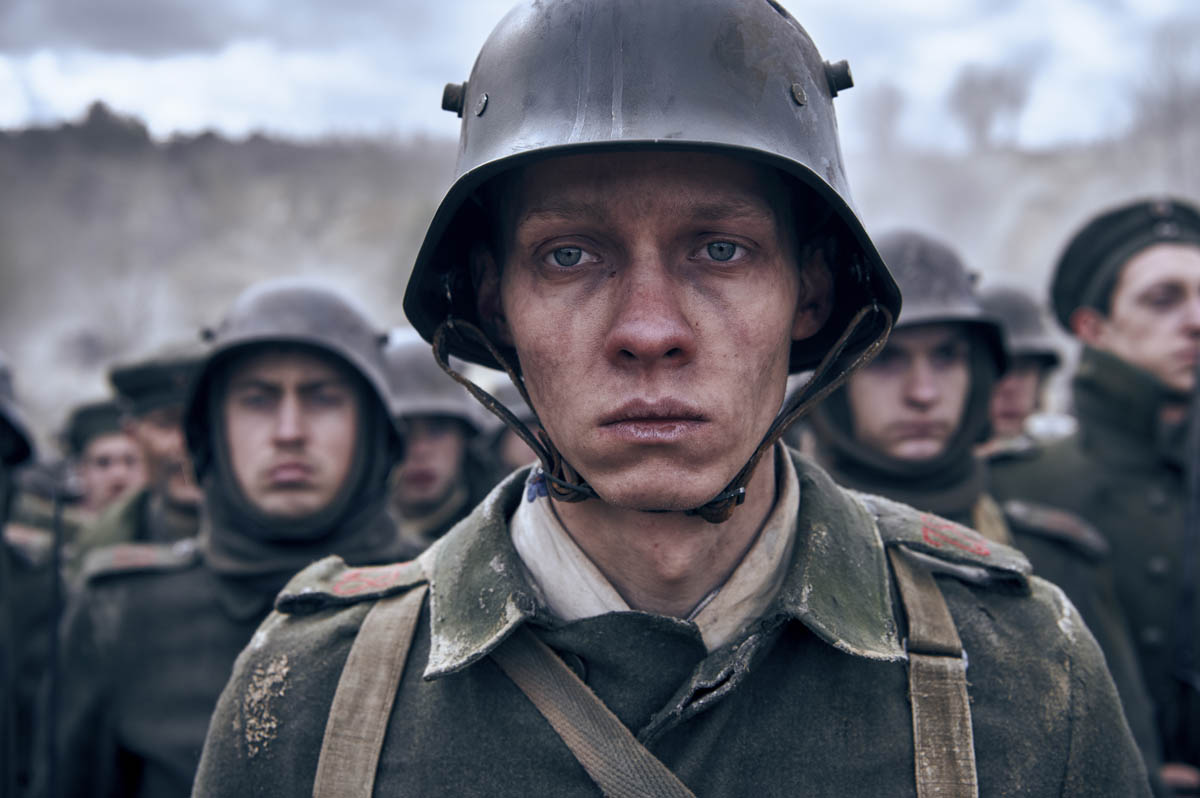 How does that affect you in your collaboration with the director - to work remotely versus having him with you in the room?
How does that affect you in your collaboration with the director - to work remotely versus having him with you in the room?
Budelmann: Sometimes, it's great and fun that I see him from the front for the first time. I think this is probably what everyone says, right? This is so unusual. Usually, he sits behind me on the right side. Now, when you see him on Zoom or Evercast and there's this little man or woman and you look right into their face.
But it's interesting. When you watch a scene together, you can see his reactions and you can also tell him, “Don't tell me you watched it because you were distracted!” The good thing about it is we all learn that remote work works, but it's also nicer to have someone here.
I sometimes feel like that I lost my social skills being with other people in a room and talking to them because everything is now digital.
I just talked to Billy Fox and he said that in order to make remote collaboration more similar to having the director where he’s used to, he puts the camera and the monitor off to his right. So it's as if —Budelmann: — As if he sits next to you!
Yeah! He looks off to the side to say, “What do you think?” I think that’s very funny.Budelmann: That's a wonderful idea. Great!
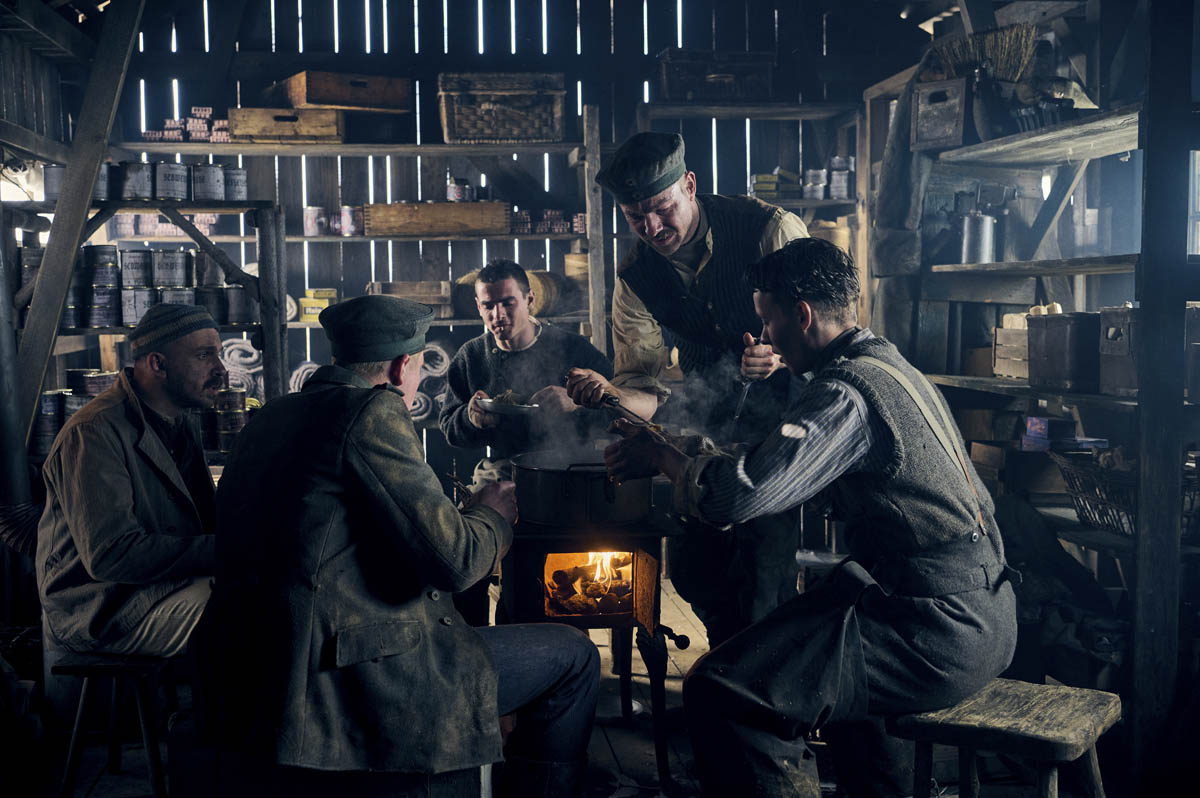 Multiple editors have talked to me about how strange it is on Evercast or just a Zoom call that you're looking at them and they're looking at you. When they're behind you, you can kind of hide your expressions.
Multiple editors have talked to me about how strange it is on Evercast or just a Zoom call that you're looking at them and they're looking at you. When they're behind you, you can kind of hide your expressions.
Budelmann: Yeah. Roll your eyes and say, “Oh God, what a stupid idea, but okay, let's try it!”
But when they're looking at you, you can't hide that stuff.Budelmann: Yeah, that's true.
There are beautifully composed, locked-off shots and then there are dollies and that kind of thing, but there's also handheld. How do you get between those things? Or is it different to edit a locked-off, beautifully composed shot compared to the craziness of some of the war scenes?Budelmann: I assume you’re talking about the nature scenes because this has been an important factor while we were editing. For me, the most challenging part was to find the right pace and to balance out violence, moments of silence, how much can the audience take, when do they need a break and when is the right time to do it.
I'm sort of proud of how we implemented these nature scenes into the story because this hasn't been in the script before.
It opened a new level that wasn't there before. It was already one year before principal photography. I think just around this time because the Berlinale just took place while we were doing this mood film. Edward and me, we were cutting a mood film, which should express the tonality of the film. This was just about a feeling.
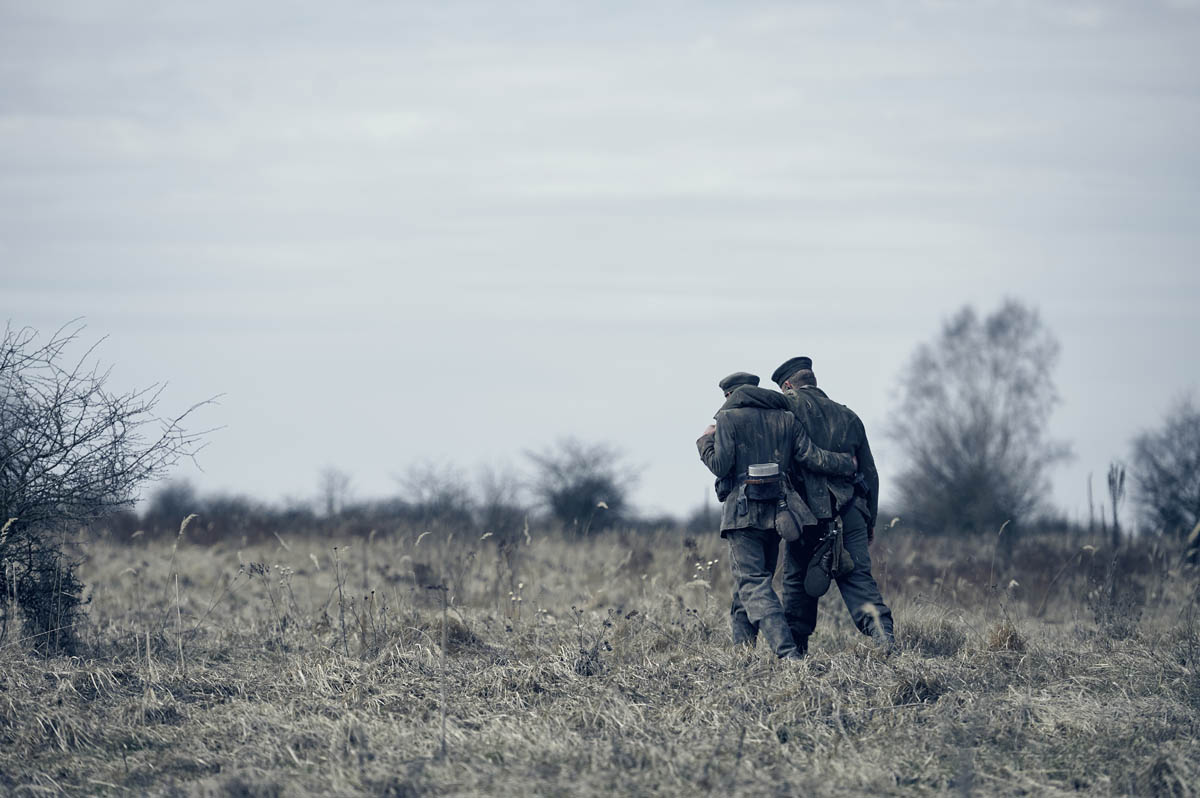
Instead of using images of war, we used images of nature that got disturbed by an increasingly destructive-sounding score. We immediately loved how this combination of beauty and violence created a tension.
This is something that we wanted to keep in the film. This is also the opening of the film. This is where we used it for the first time. One year before shooting, we didn't know yet how to use these images, but it seemed to be pretty clear to me that this might be important to get these shots.
I asked Eddie, please shoot images of beautiful nature as much as you can, and we will find some way to put them in.
Just to jump back a little bit, you were talking about this “mood film.” You're talking about literally editing together something for All Quiet on the Western Front that shows the mood of the film?Budelmann: Yes. It was a three-minute piece. So we saw a river and with some slight river noises, nature, a bird and a tree, a landscape. By putting this destructive music on it, there was friction immediately. This created a really nice tension. This is something that we liked and we wanted to keep that.
Do you remember by any chance what the piece of music was?Budelmann: I think it was taken from There Will Be Blood [laughs].
Very cool. Great choice.Budelmann: Don't tell anyone [laughs].
Netflix.jpg) Oh, ok. Well, it's just a mood piece.
Oh, ok. Well, it's just a mood piece.
Budelmann: Well, it's just you and me, right?
Just you and me and a couple thousand of our friends.Budelmann: This is what we did many times in commercials. It's quite a common thing that was done in the commercials business to do mood films, to show the client what their car commercial would look like. They might see a BMW driving around the corner and then it will be a Mercedes later, but it is sometimes nice to give the rest of the team a feeling or an idea of where we are going.
I love that idea. Talk to me about a specific scene after the dog-tag collecting scene. Talk to me about that break between collecting them in the trench and counting them and recording the names in the headquarters.Budelmann: It's interesting how you always pick out the scenes that were reshot [laughs]. Is there a marker in the picture? How do you know?
These are just things I’m curious about as an editor.Budelmann: This is the next scene that was reshot, actually. That's a good example. That's a moment when Paul finds his dead friend Behm with a ripped-off leg.

We have an incredible performance by Felix Kammerer and how he holds back his feeling and how he takes care of his dead friend, trying to close his jacket. Then, he holds back his feelings and suddenly, it breaks out. Then, there is his lieutenant in the background who tells him, “OK, come on, Paul. Get back to work.” Then, he follows orders.
This is the first scene that was really, really intense because it was so violent. Here, we also felt like we need to pull out the audience. Earlier, I didn’t finish describing how we use these nature scenes, but we use these nature scenes as contrast, as breathing space between intense war scenes or really intense scenes to pull out the audience, to create distance sometimes, just to give the audience a rest and so they can calm down and when we felt that it's just too hard to bear.
That's how we used it in certain places. Here was, as it was pointed out, one of the first places where we used that. Maybe it also shows how merciless the war machinery continues and how less the world cares about stupid humanity. It just pulls you out. It's like a reset. It helped in many ways that we have this new scene that Edward wrote and that was reshot because we could have a more elegant time jump. I think it's one year later when the sequence starts. This long walking sequence gave the scene more weight and, showing this whole procedure of this long walking, we could easily have cut this down to 10 seconds, but we wanted to stick with this formal act, to show how long this administrative act takes.
It also shows how long this bureaucracy takes and it shows again the gap between the upper class and the soldiers, who are dying while this administrative act takes so long. We felt that we needed to introduce Erzberger at an earlier point than was written in the script.
Originally, we see Erzberger at a much later point. It was in the middle of a sequence when Paul and his friends look out for the kids that were guests later on. There was a sequence when we see Erzberger and the general in the car. They had a longer dialogue. There, this dialogue was about, okay, the military is the one part and the bureaucrats are the other part and they don't like each other.
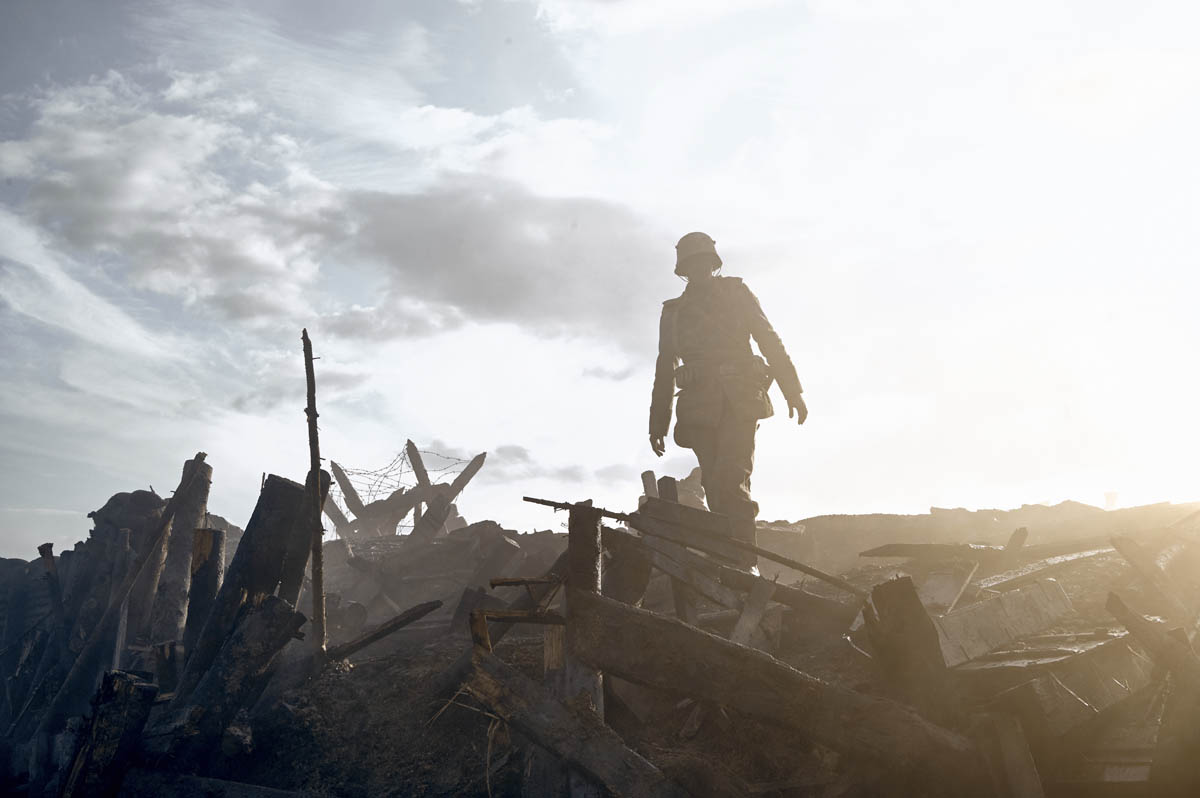
It didn't feel right to have this dialogue here at this point and to introduce a new character at this point because this section was more about the friends. We didn't want to distract here and that's why Edward wrote the scene, which gave us a chance to introduce Erzberger at an earlier point and also the people who orchestrate the war, so we had this element introduced at an earlier point.
It had been cut together that way and in the context, it didn't feel correct.Budelmann: Exactly. Coming back to your question, why don't we cut to this leadership meeting directly? It would've just taken us too far away from the characters and honestly, I think we all can imagine what this meeting is about. We saw it probably in many, many films. I think it's told well enough by letting the door close, and then we know what's going on.
Yeah, absolutely. You mentioned the formality of this walk and also the separation between the soldiers and the people creating the war. The walk helps that. The other thing that gave to me was you're looking at these poor kids in these disgusting, dirty foxholes and trenches. Then, you see this walk through this beautiful, ornate building. Everything's clean and perfect and orderly. It just gives you that contrast even more. I love that. One of the things I wanted to talk about is the latrine scene. I don't know if you call it a latrine scene, but there's two men sitting on an open toilet, right?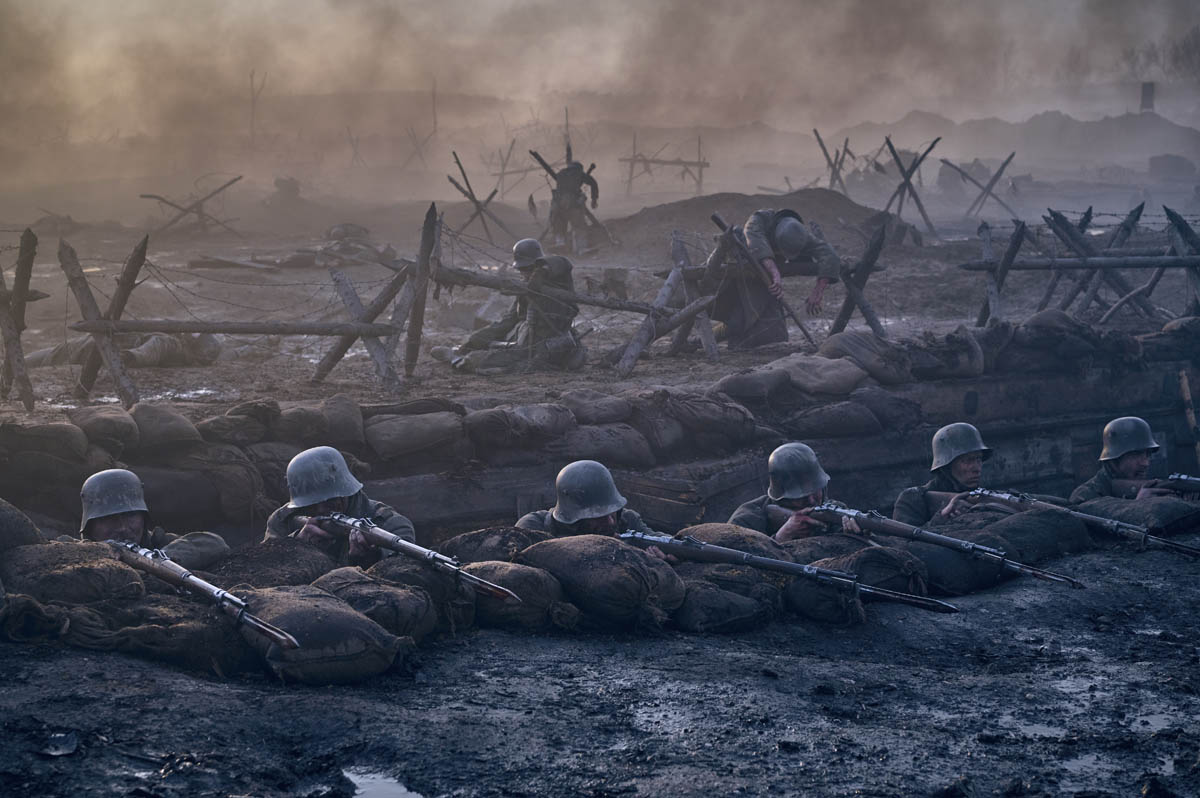
Budelmann: Yeah. It's called Donnabalken in German. “Thunder Trunk.”
[laughs] Alright. I love it. The point — for those who either haven't seen the film or can't remember — is almost that entire scene plays out on a single two-shot. I'm assuming you had coverage each way if you wanted to use it and you chose the two-shot. Or can you tell me about the coverage that you had and the choices that you made in sticking with the two?Budelmann: This is one of the best performances of Felix and Albrecht. When I watched it, I said, “Okay, what should I do with this wonderful take? It's there already. Why should I cut anyway?” The performance is outstanding, so every cut would just have destroyed the natural development of the scene somehow.
The turning point comes as a surprise, so there was no need to go into the coverage earlier. This was a conscious decision to stay in this two-shot and save the close-ups for later. As soon you start using the close-ups, they lose their impact.
This was a pretty long scene and as I said, there was no reason to get into the coverage earlier. The good thing about it was that we were able to come up with a completely new visual setup at the end of the scene when they talk about their dreams and their desires. We had some more cards up our sleeves.
For me, I enjoyed it as an audience member because - to describe the scene - it's two guys sitting on the latrine and one of them is reading the letter to the other guy because the other guy can’t read, so you're able to see both of their reactions at the same time, which is also very powerful.Budelmann: This is exactly what I thought. This is what I wanted to say. You stole my line! [laughs]
You’re right. Why cut?Budelmann: Yeah. Why cut? I mean, there is one guy who is reading and the other one is listening, so you see all the expressions. Why the hell should I cut anywhere? It's such great timing between those two.
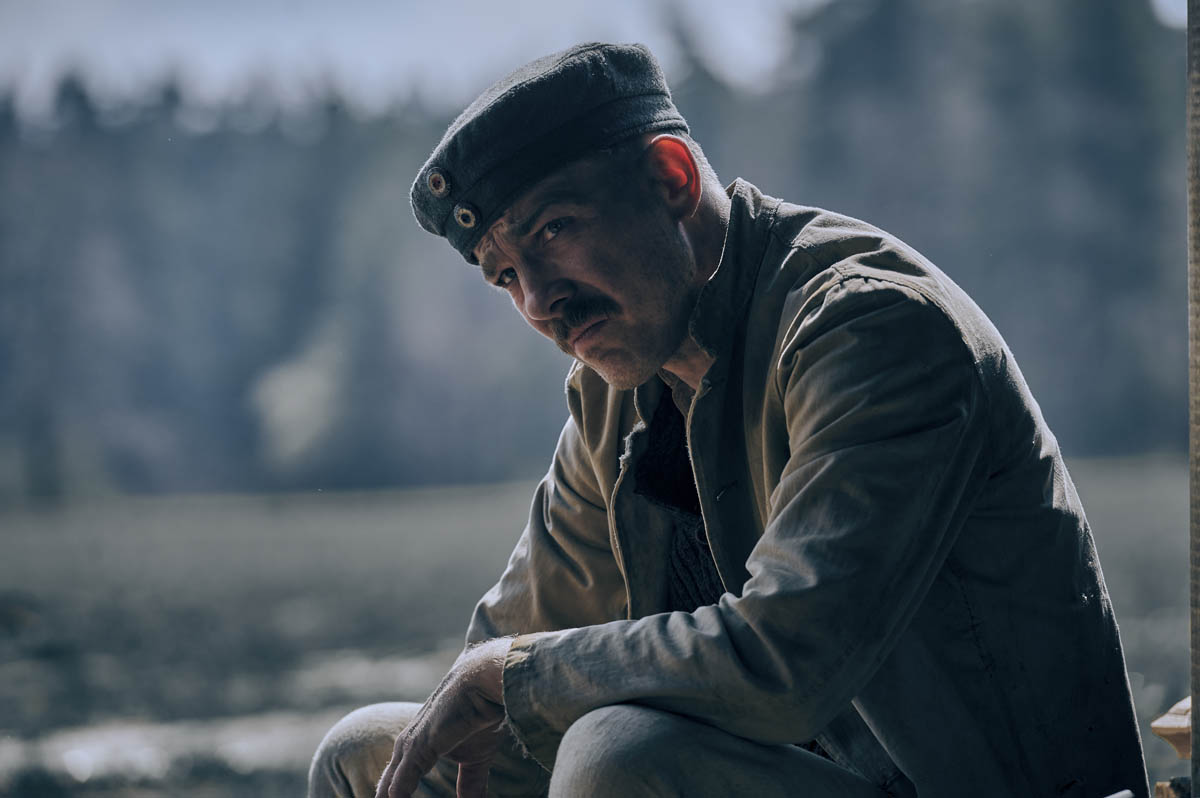
Just a little secret. We cut out 10 seconds. There's just one line that we cut out and there's a hidden cut. There’s one cut on the left side and five seconds later a cut on the right side. I did that so that it's not happening at the same time on both sides.
Wow. Very nice!Budelmann: Yeah, because they are both so precise. Albrecht Schuch, he’s brilliant. Felix as well. We didn't even need a morph or something. Even a jump cut would've worked because they always stayed in the same position.
Wow. So you did a split screen and then half cuts at one point and half cuts at the other.Budelmann: Exactly, but I shifted the morphing points, so that it's not happening on both sides at the same time, so that it's more hidden.
That is amazing. I'm going to have to look for that and hopefully I won't even be able to see it.Budelmann: No! Don’t! [laughs]
Then, does that make it harder when you finally do cut?Budelmann: I think not in this case. I think the beauty of it is the audience can't go anywhere, so they have to watch this two-shot because we are not cutting anywhere. There's no distraction. I think the surprise comes with this turning point that Kat’s son is dead. From this moment on, the energy of the scene changes anyway.
For me, it felt quite natural to go into coverage here because there was this natural development in the scene.
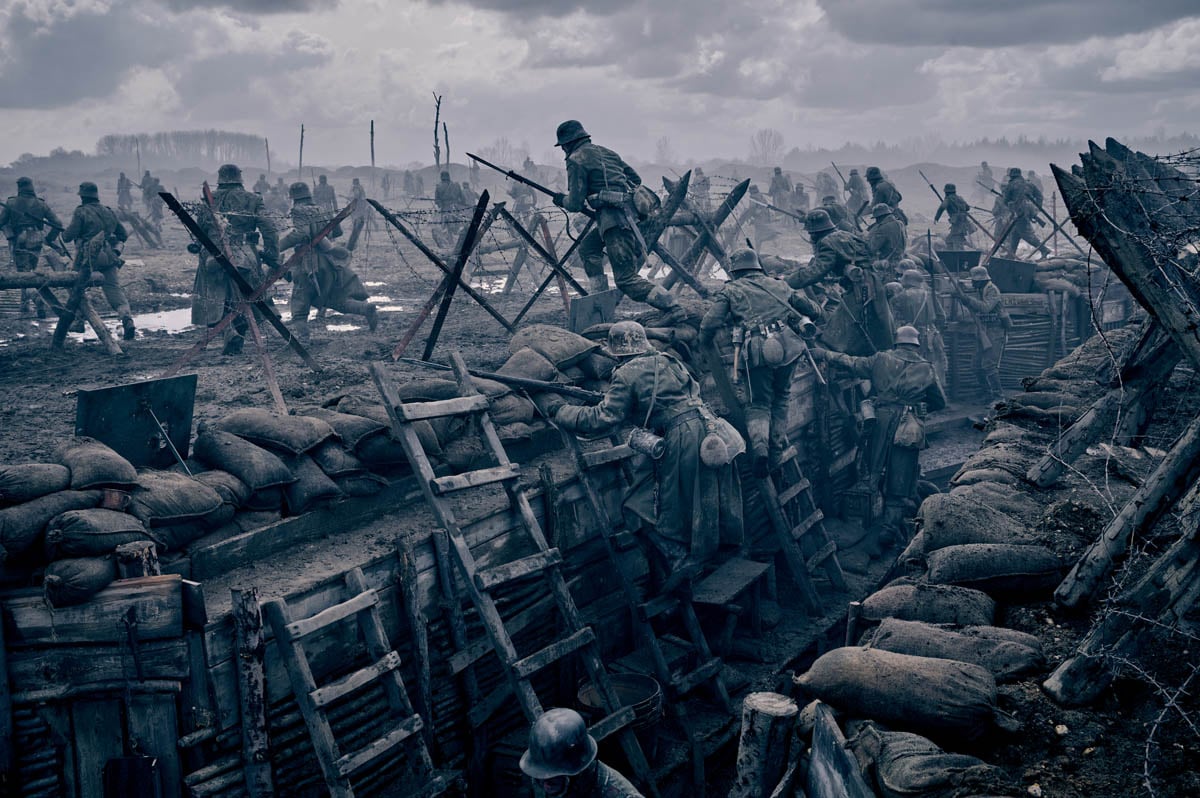 I always like to talk about intercutting. There is a part of the movie where there's this German delegation that's going to Paris. I think they're going to France to negotiate the end of the war. In the meantime, you're watching the war happening.
I always like to talk about intercutting. There is a part of the movie where there's this German delegation that's going to Paris. I think they're going to France to negotiate the end of the war. In the meantime, you're watching the war happening.
Was that structured the same, the intercutting back and forth, or did you find there were moments because of emotion or something that you wanted to change the way the script intercut with the way you intercut?
Budelmann: It wasn't exactly like it is now in the script. In the script, there were three bigger sequences. One was the departure to the front and the arrival at the battlefield. That was the first part. The second part was the German delegation when they have breakfast, then they walk over to the French train, and then they have the negotiations. The third part was when we go back to the trench and the soldiers are already on standby and Kropp hangs up his poster with the girl and then they would get the order to attack. This was how it was scripted, but we felt that we wanted to bring these elements more together.
That's why we started with this Poland montage. As soon this Lieutenant Hoppe wakes the soldiers up is also the moment when the war machinery wakes up again. This is an initial moment and we wanted to expose this moment and stretch it or stretch the tension until the attack, which was a bit tricky and challenging because this whole sequence is nearly seven minutes long.
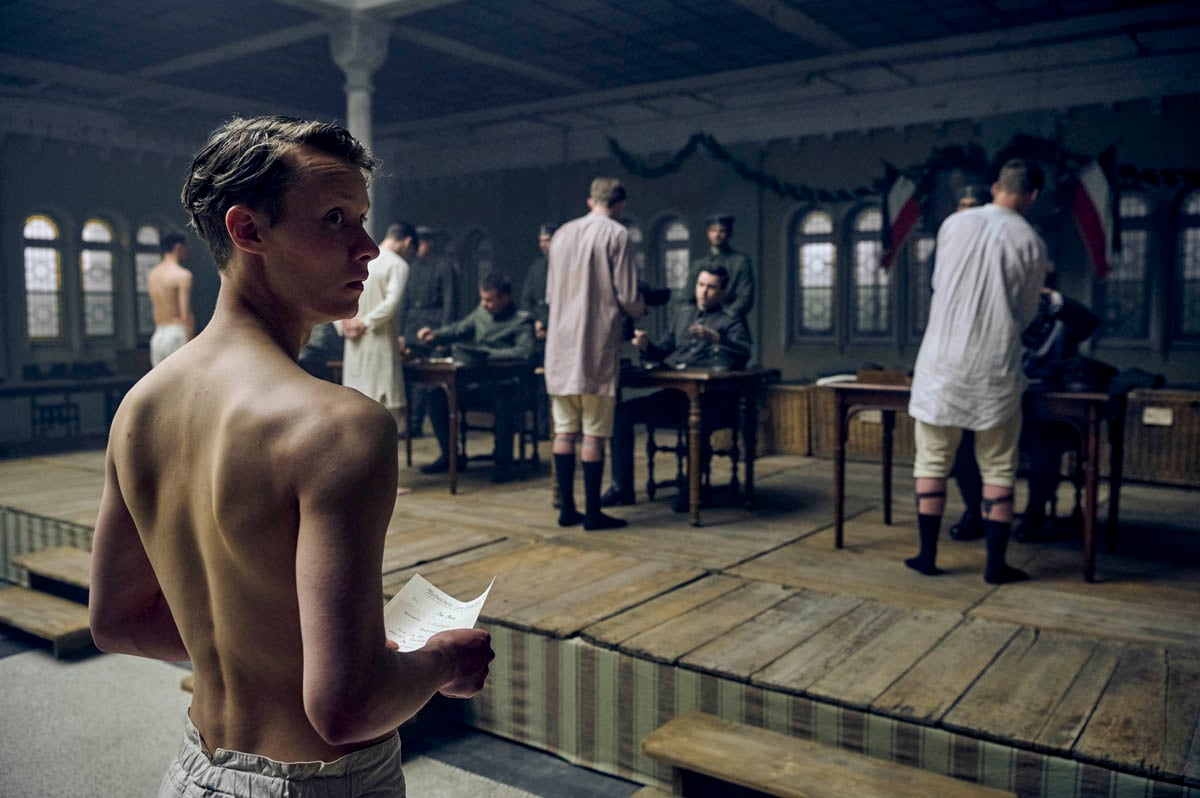
We had to start on a very low level, so we would have enough to carry through. I played around with different music layouts, which helps you keep the tension over seven minutes and that it doesn't manipulate the scene at the same time. It should stay in the background because there are so many elements.
The soldiers wake up. They get carried with a truck to the trenches. Then, there's also dialogue sequences and then we are back in the trenches. But I found a good temp track, which is just like a ticking clock in the background. Like a boom, boom, chuck. Boom, boom, chuck.
This is something that holds this whole sequence together and gives us the chance to have this long buildup until the moment when this French general says signe, which means “sign.” What we wanted to create is this direct connection between those two parties and on the line, which should initialize the marching order.
We build it like back and forth, back and forth until this signe, that there's a direct connection between the negotiations. Dramaturgically, it's nice to build it up like this.
I have a link to a scene from the movie. One of the questions that I asked was about the anticipation moments before the tanks arrive. It felt incredibly anticipatory. I wanted to know how you built that. Is it the length of the scenes or the shots? Is it music? Is it sound effects?Budelmann: I think there were many tricky elements to deal with. It starts in the kitchen in the French trench when they’re eating everything from the French kitchen and then suddenly, everything starts vibrating. Rats are running through the room and something's coming.
It was already tricky because the vibration can only happen when the tanks are really close already and obviously they are not there yet [laughs]. We needed this element, so they need to get out and everyone is excited. “What’s going on? What is this?”
This is the first World War. This is the very first time that they used tanks and also flame throwers. They had no idea what's coming.
We wanted to tickle out this moment as much as possible. Like, “Is this a tyrannosaurus rex coming across the field? What is it? No, it's a tank.”
This reminds me of one reporter. He wrote a review after the TIFF Festival. He or she said, “These tanks are such terrible 3D work. Looks so unreal, like from Star Wars.” I thought, “This is not 3D! These tanks are real! These are real tanks!” We had two of them. I think now we see six of them, so they are just duplicated in the field by VFX.
That’s pretty funny.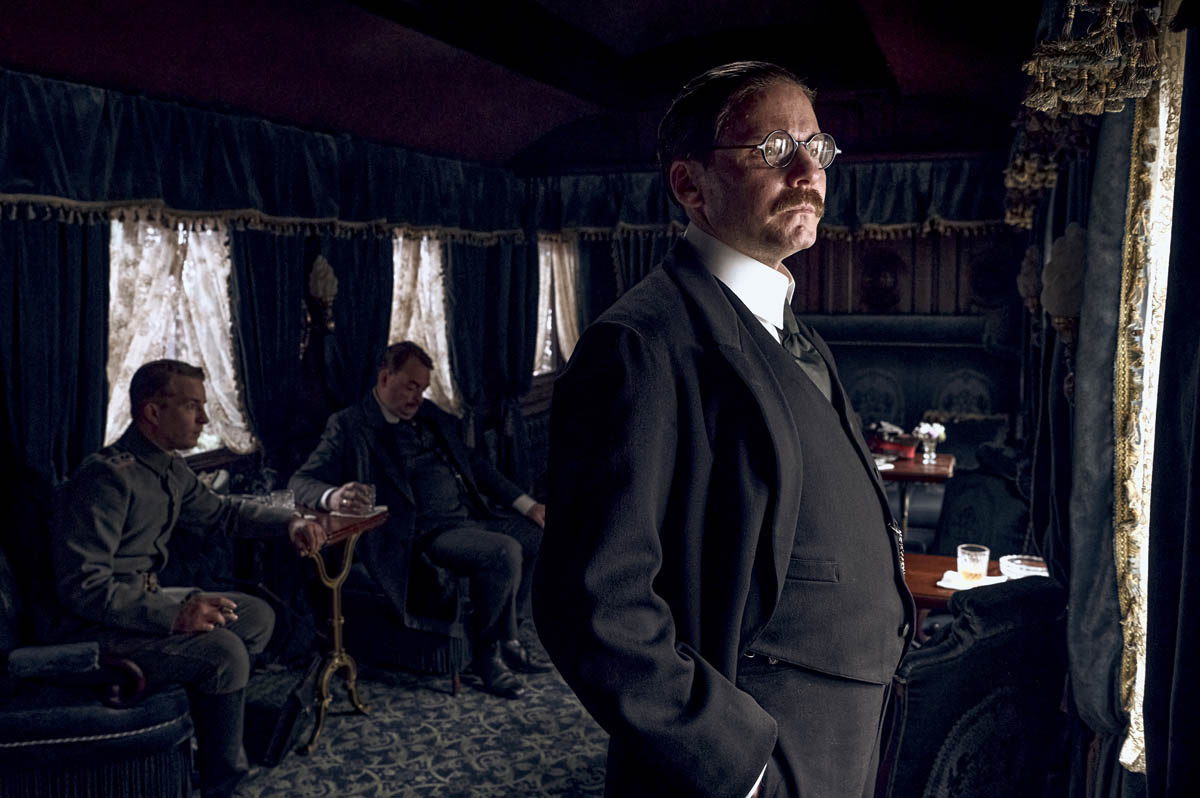
Budelmann: There’s also a bit of music layout (temp) work as well. All these scenes lift from the music layout, I must say. We see the action, but to balance out when the music comes in. The level and tonality needed to be explored in the editing room.
For me, editing is the most creative part of filmmaking. It’s not just about cutting the picture. It's about the whole package. It's about performance and music, picture and sound. Everything influences tonality and story and emotional perception.
The editing room is the only place where we can work on all these elements at the same time. We can make the decisions here and we can work on all these elements here. This is what we basically did. I found some really nice moods in Volker’s folder of temp music.
What he gave us was just a gift. He created this bold sound of the machinery of tanks that comes over the mount over the hills and with the stamping sounds. This was just brachial. I don't know the English word for that, but it was so bold or brutal or brute. We were glad to hear this. This was great.
You were talking about the score. While you were editing, did you get something from the composer? Like some kind of samples or little pieces of theme?Budelmann: At a later stage. Volker came to us at a later stage. In the middle of June, he watched the film for the first time. From then on, he's really quick and he's so creative and gave us a lot of new cues.
He went sometimes back and forth to hit some more cues and important points that we had in our mind that needed to be addressed, but he was so quick and this was really great. Referring this bah-de-dah…
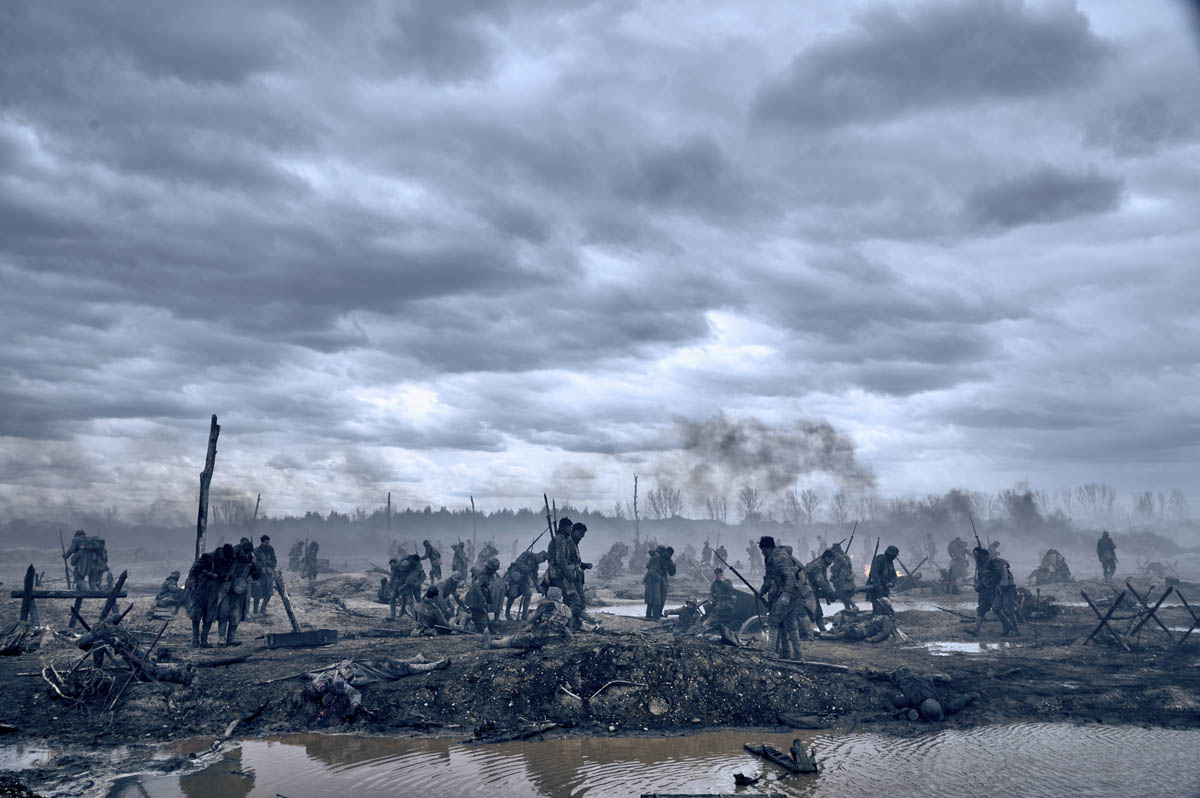 Bah-deeee-dum. I don’t know how it goes.
Bah-deeee-dum. I don’t know how it goes.
Budelmann: You can do it much better than me [laughs].
I can't quite remember the exact phrasing of the music, but there's a very specific theme, very short musical phrase that invokes war.Budelmann: For me, this is a bit like the call of the sirens, like war is calling. This is the feeling that I always have when I hear this iconic sound. I remember when I laid out the music, at first I didn't have the bah-dee-dah, but I was able to simulate the tonality and the important turns and dynamics that needed to happen.
Volker invented this iconic melody, I think, because he was afraid of any other more complex melody that would have been just destroyed by this immense sound design. When it's too long, there could be probably any explosion in the midst of it and his melody would be destroyed.
I think he was right. There's so much going on the sound level. He had to find elements that fight their way through the sound design somehow. After the first screening in Berlin, he just headed home. He's living in Dusseldorf, not in Berlin.
Already, the next day, he called us into the editing room. Edward and I were sitting here and he sent us this ba-dee-dah sound. We said, “Really?!” [laughs]
It was great, but it's still a historical film. But I really love electronic music with classic elements. I think, right from the beginning, it might be a great friction to have this modern music in combination with the historical content. Edward said, “This sounds like Led Zeppelin,” so Volker was really, really nervous when he called us.
He said, “What do you think?” Ed said, “It's great. It's just great. It's wonderful.” He was so relieved that he likes it because for him, there was an important decision that needed to be made because his whole mindset went into this direction that he is able to work with these three elements.
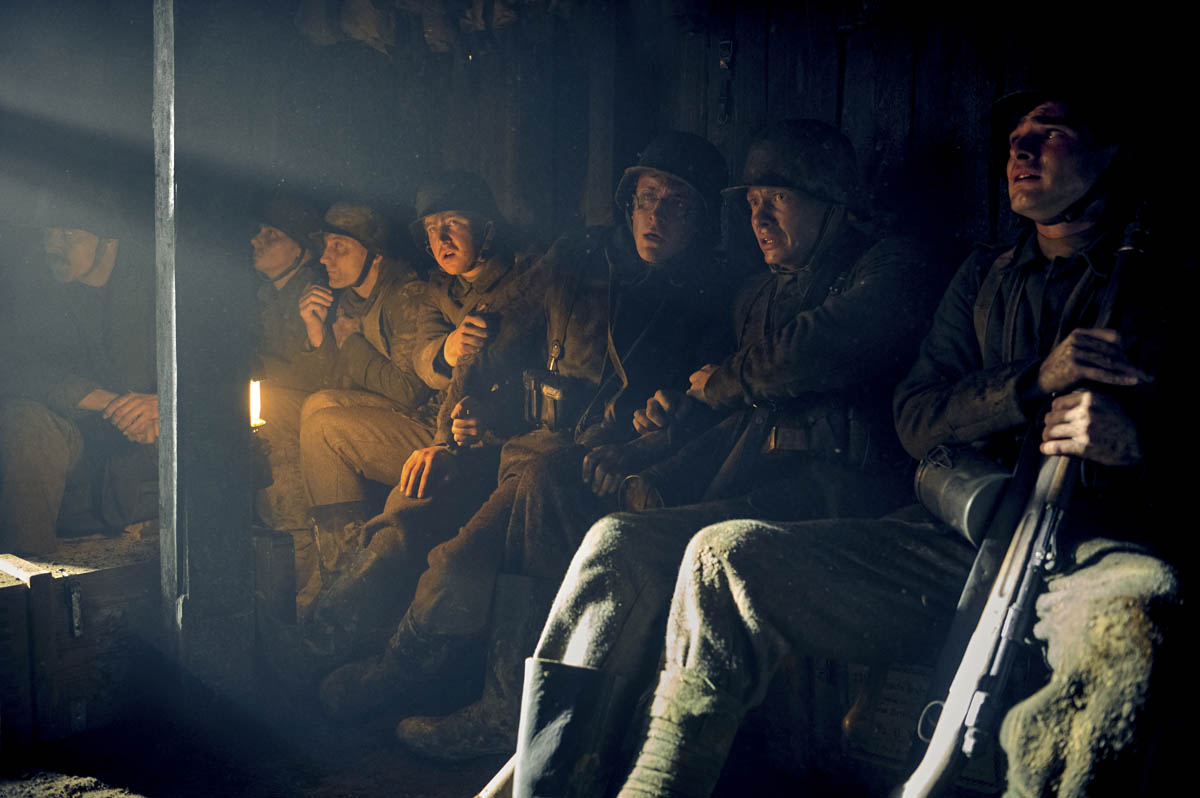
I think he was afraid someone might come around and said, “Great sound, but can you compose some music with it?” This would been the worst case that could happen [laughs].
It's like the reverse of the famous scene in Amadeus where he says, “Too many notes.”Budelmann: Exactly!
Too few notes. It's just three notes. That's not enough. We need more.Budelmann: [laughs]
So that little phrase, those three notes, happened multiple times throughout the film. Do you remember the decision of when to use that and when not to? Because it’s only used in several places.Budelmann: It's used in just a few places in its original form, I would say. I think, at the beginning of the film when we follow the journey of the uniforms, when the dead bodies get undressed and then they carry the uniforms, when they get washed, and then when there's the sewing and all that.
I think Volker said for him, this is also like the war machinery and this calling thing. But I learned last weekend when we were in London on the screenings and Q&As, he said that these three elements not only take place in these three or four moments. He made variations of it and it's mostly everywhere.
Even when you remember the scene when Ertzberger and the general are in the car and then there's a horn at the beginning of a trumpet and even the trumpet is doing the ber-ber-ber [laughs]. He put this element in many of the cues.
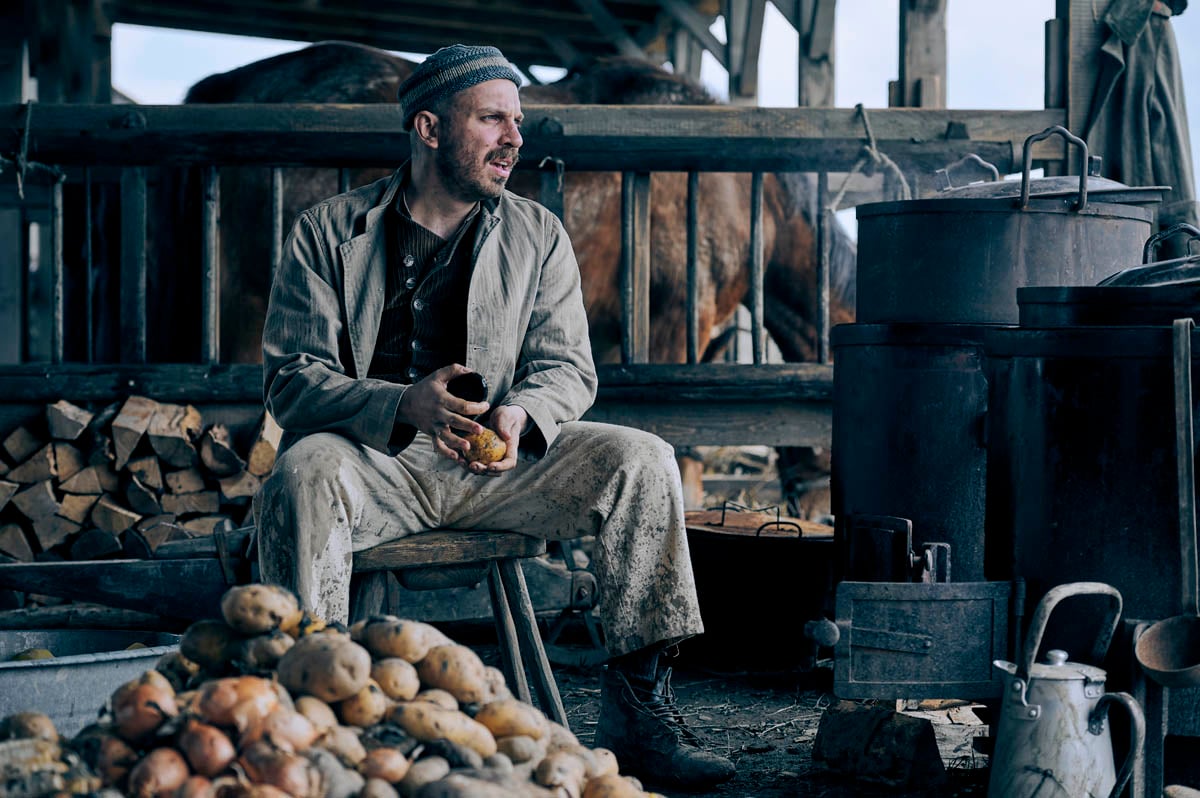 I love talking about pre-laps.
I love talking about pre-laps.
Budelmann: There’s one in the beginning of the film, when Paul arrives with his bike in front of the school, meets his friends, and then we cut into the school building where the headmaster holds a speech about how beautiful war is and everyone is coming home as heroes.
There, we had a pre-lap of the speech and we see these empty rooms in the school. Then, finally, we cut into the staircase where we see all these young faces, the young boys. There we use the pre-lap of sound. This is something that we didn't talk about yet. This element of the snare drums that we use quite often.
This is an element that we invented. In the first week when we worked on the sequence in the beginning, Edward brought a cue in the editing room, which was just a three or four-minute piece of drum hits, like bang, bang, bang, bing, bing, bing, bang. It sounded like a military snare drum.
He had something in his mind, so let's try to work with it. Let's put it in the timeline. Then, there was a hit. The hit doesn't do anything. Then, there was a longer sequence like dim, dim, dim, dim, dim, dim, and we thought, okay, this is a stupid idea.
But we further explored this direction. Then, we tried around with a combination of other sounds. I imported some shutting-door sounds. Then, I had a cello bow, which hits the cello, which sounds different.
We combined the snare hit with these sounds and a little bit of a gunshot in the background. Then, we tried adding these elements with always changing sound color in between this beautiful dialogue between the boys in front of the school, just to destroy the scene because it was just so beautiful.
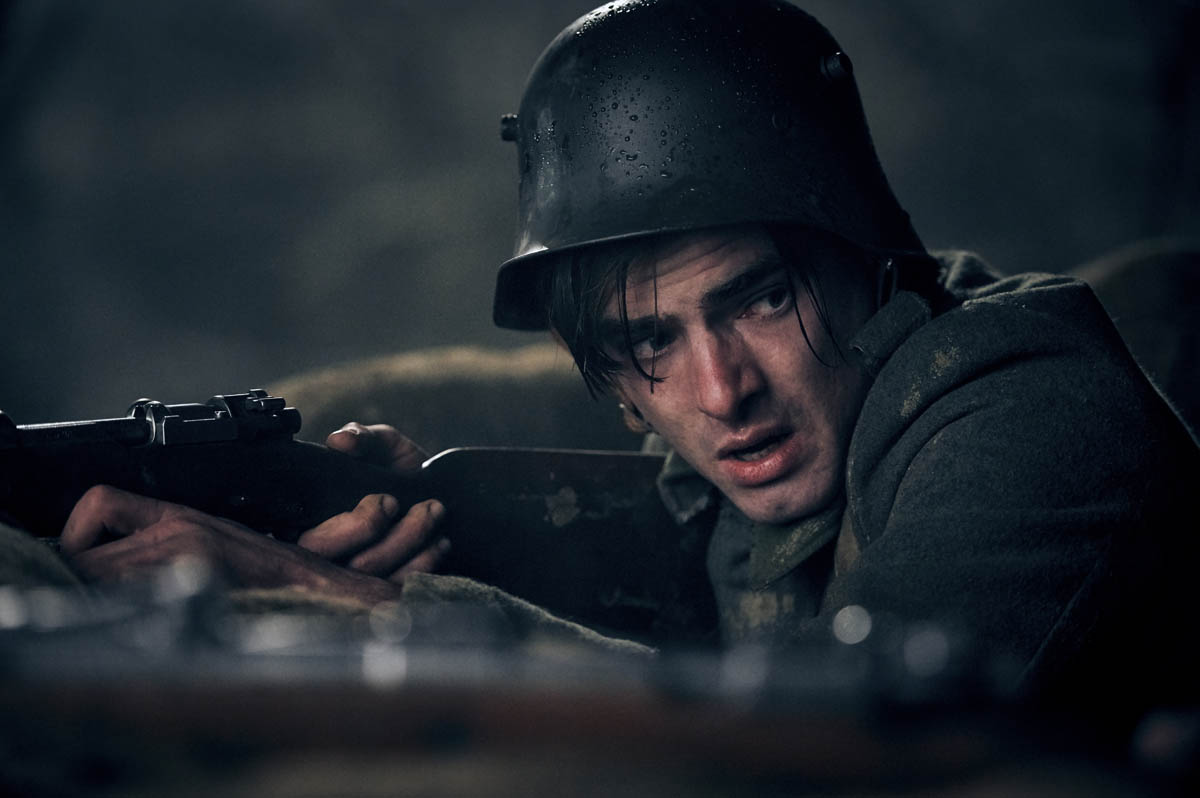
There was no tension in it. We thought, okay, there's a little gap in between the dialogue. Let's add a hit here. So there was a first hit. Bang! When we watched it first, we thought, “Okay, that was strange. Maybe someone might think that this is a mistake, but let's make another one.” Then 10 seconds later, we made another hit.
Then, after a while, we created something that started to work somehow. We found out that it brings to life this element of war already in the beginning and that we can work with this element. It also helps with transitions from one scene to another.
Later on in the film, we used it several times. All these snare hits are accurately set in the edit suite. This is something Volker had to recreate, frame-accurately, exactly there, because otherwise all these little sequences that we created, like little bridges from one scene to another, wouldn't have worked.
It's not only there in front of the school when we cut to the corridor and then through the schoolmaster. Also, when Kat dies at the end, there are some pictures of dead trees and all that. Everything is set really in a certain rhythm.
This only works when it would be reproduced in the way we created it in the edit, so there was no way in between.
It's interesting that he recreated it in the composition after you created the sound.Budelmann: It was really hard for him because Edward told him, okay, you need to find someone who actually can't play drums!
[laughs] They could have hired me! I would've been perfect. I would've been happy to do that. Gimme a drumstick!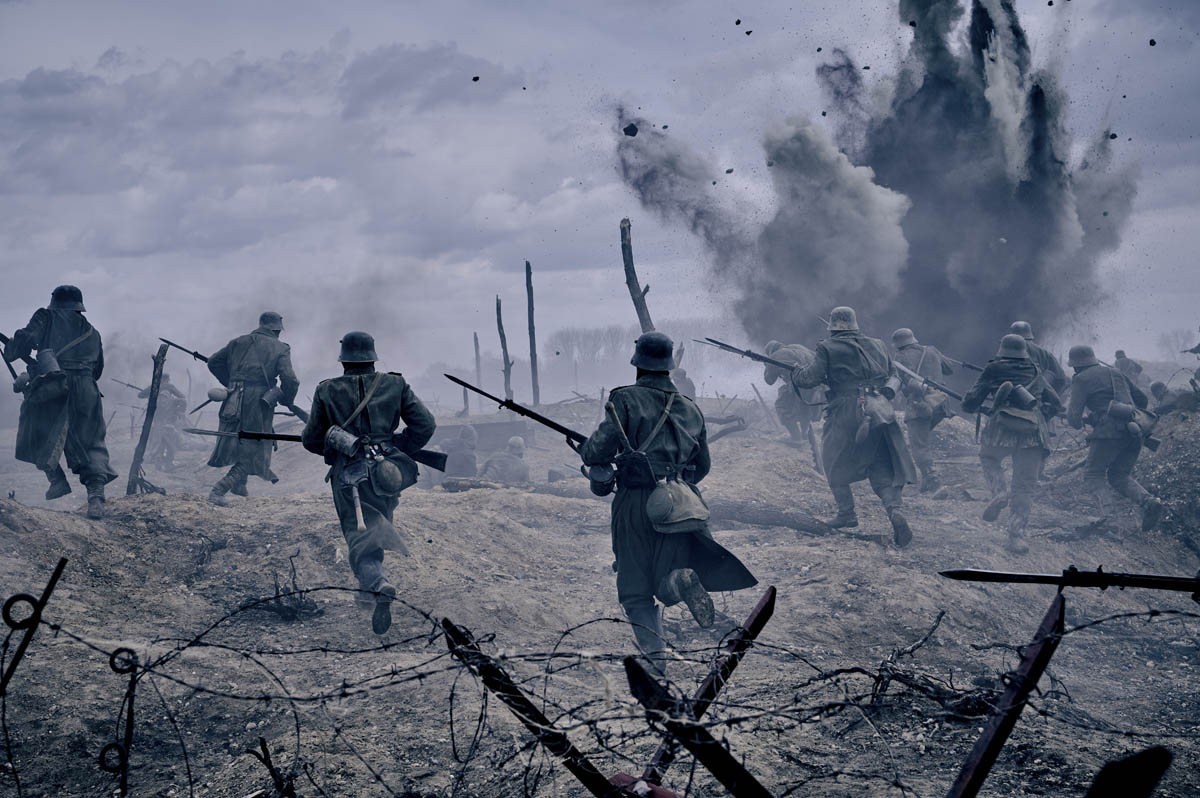 One of the things that I took from watching the film was how difficult it was to watch, just like you remembered reading the book and how it made you feel. The movie made me feel the same way. Did you have to do anything to protect your psyche from the onslaught of those images?
One of the things that I took from watching the film was how difficult it was to watch, just like you remembered reading the book and how it made you feel. The movie made me feel the same way. Did you have to do anything to protect your psyche from the onslaught of those images?
Budelmann: I never thought about it while I was editing, but you're right. I spent a lot of time with screaming, shouting, mud, and blood and all this. This definitely leaves traces behind, but I wasn't aware of this while I was working. I learned it could have been worse because I spent some time in the mix with the sound guys and… holy crap! Before that experience, I thought it was loud in my cutting room. It was so incredibly loud! It was physically painful. I cannot imagine how those guys sit there day by day with this noise. This is really unbelievable. I admire the sound crew, but I don't want to trade places with them.
Luckily, I have a wonderful wife and daughter and they have given me stability and grounding every evening, so this worked out. Look at my hair! It turned gray and this happened two years ago [laughs].
I completely understand, and it's a tribute to your wife and your daughter and your family to keep you grounded from going completely white.Budelmann: Yes [laughs].
What's the value of having you in the mix? Why should an editor go to the mix?Budelmann: This is a good question. For some reason, I think it's always good to be there and at least a few times before they close the mix. Because sometimes, elements get lost that I laid out. But luckily, the amazing crew around Frank Kruse, our sound designer, took over many of the layouts that we did in the offline edit, I think, because they saw probably the value in it.
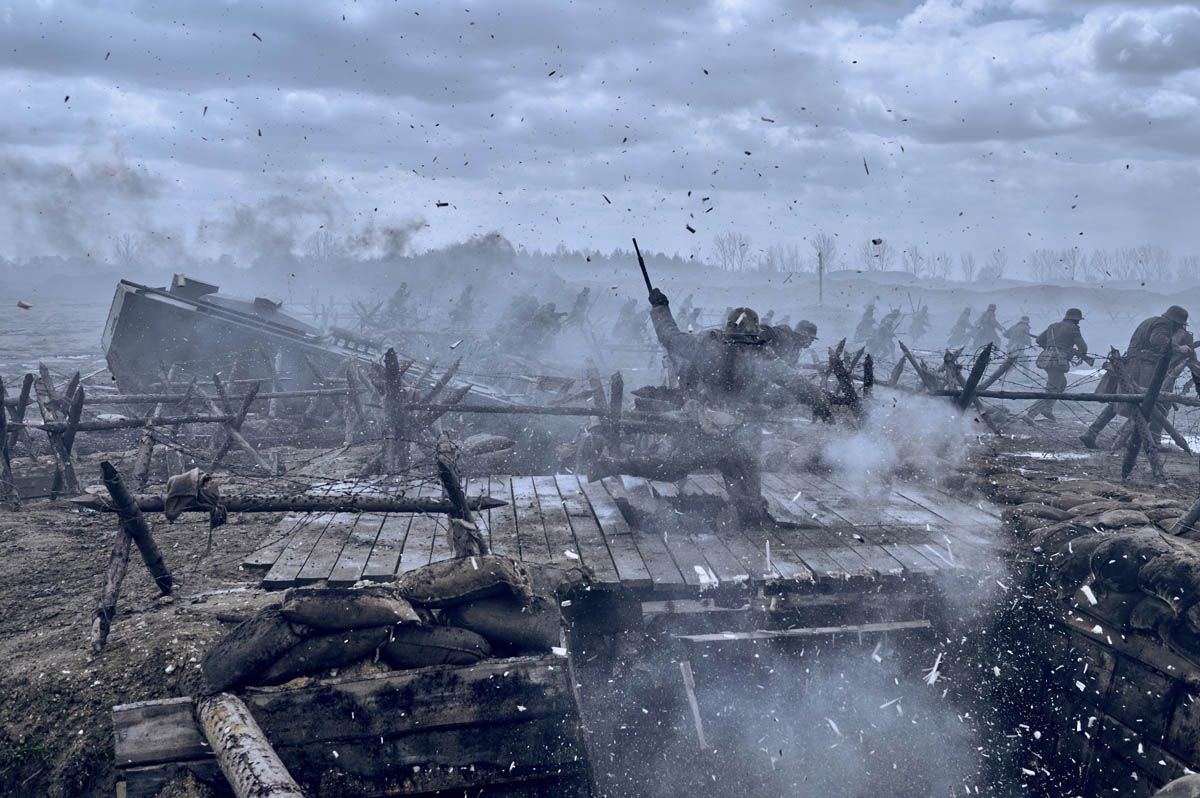
Edward is also sound-oriented. When something is wrong with the sound, we really take a lot of time to find additional audio takes with a better pronunciation or work. This gunshot needs to be two frames, earlier or later.
Edward really wants it to end up in the mix exactly like this and not different. These changes and perceptual perspective that I always do — I think this is important. We took the time here to figure it out and had a reason why we did it, so why not take it over?
When I watched it for the first time, the sound mix, I was blown away. The soundscape is so amazing. I never heard something like this before and I thought, is it ‘cause the noise level is so high? What is that? It was so intense and it's amazing work what these people did.
Love it. Sven, this has been such a great conversation. I am so grateful to you for joining me and congratulations on all your success. The BAFTAs, the Eddies, all those things. Is there a German Oscars?Budelmann: Yeah, there's a German film award called the Lola.
Were you nominated for any Lolas?Budelmann: I have no idea [laughs].
It hasn’t happened yet?Budelmann: No, I think it's gonna be in April.
Well, good luck with that. Congratulations on all the well-deserved nominations that you've received so far.Budelmann: Oh, thank you so much. It was an honor to be with you, Steve. Thank you so much.
